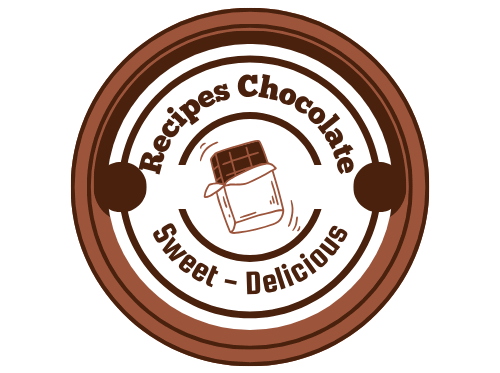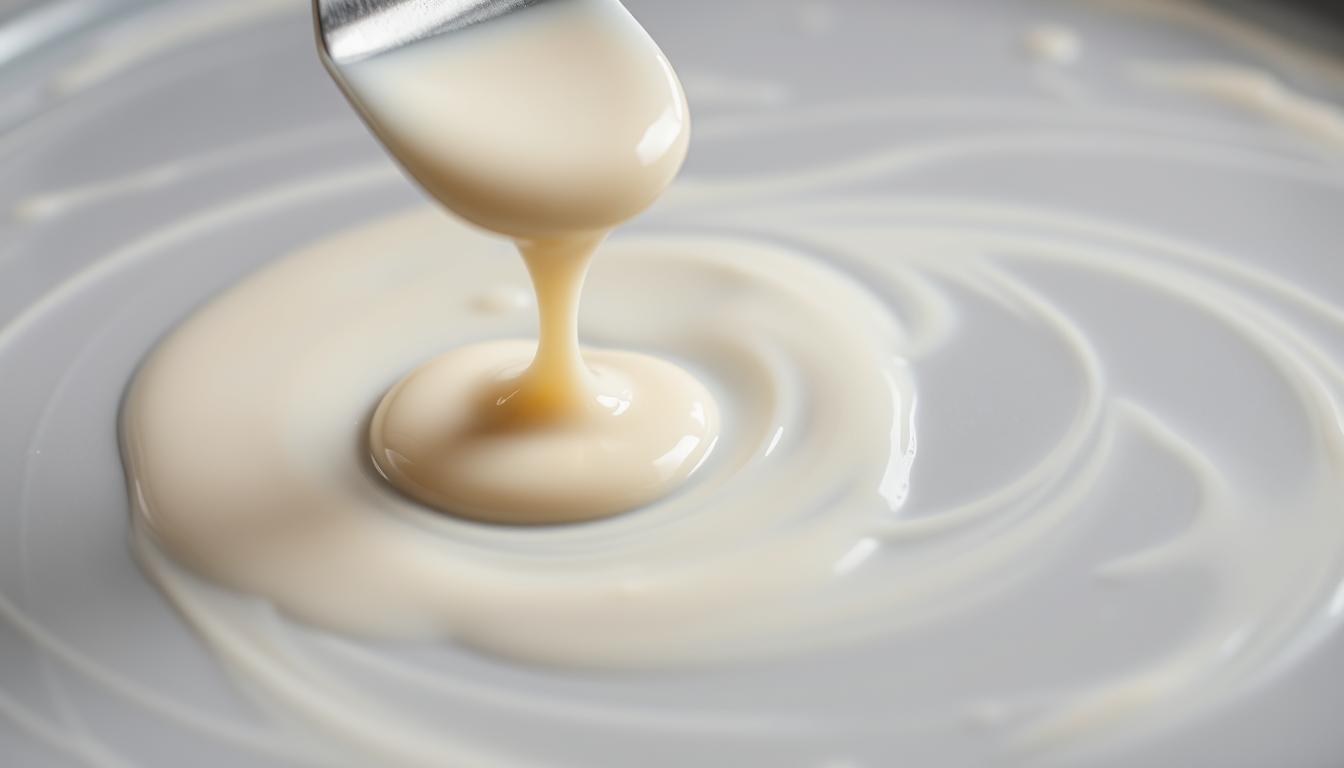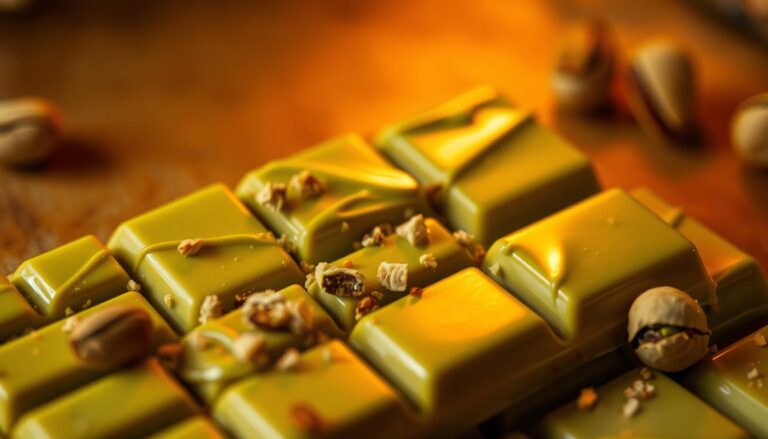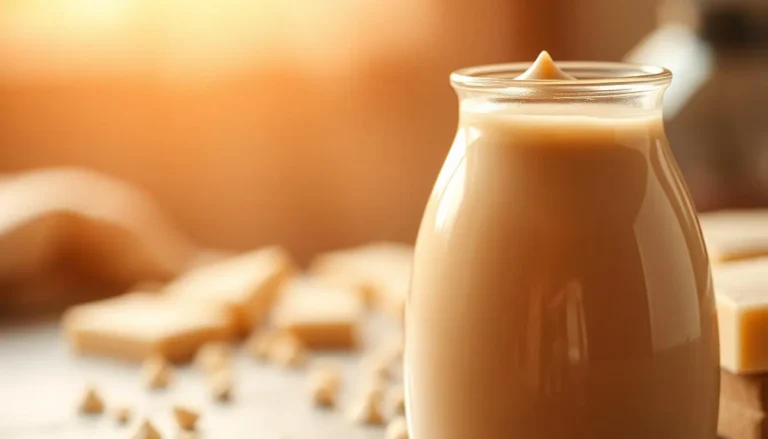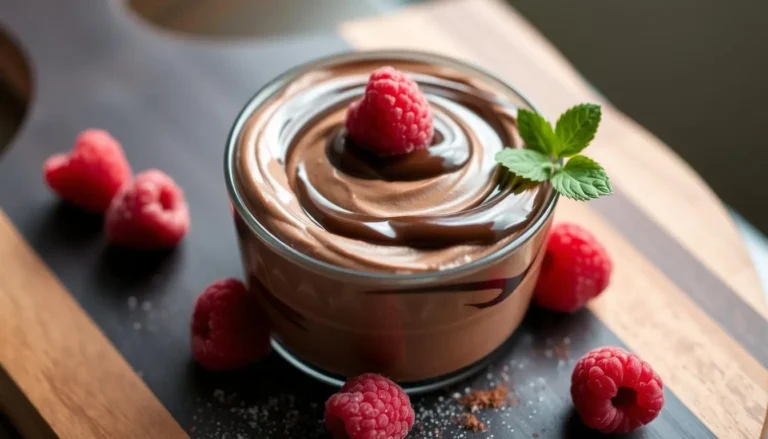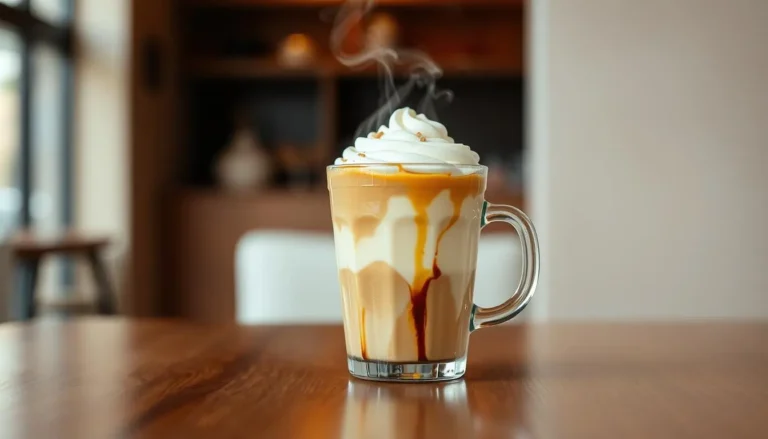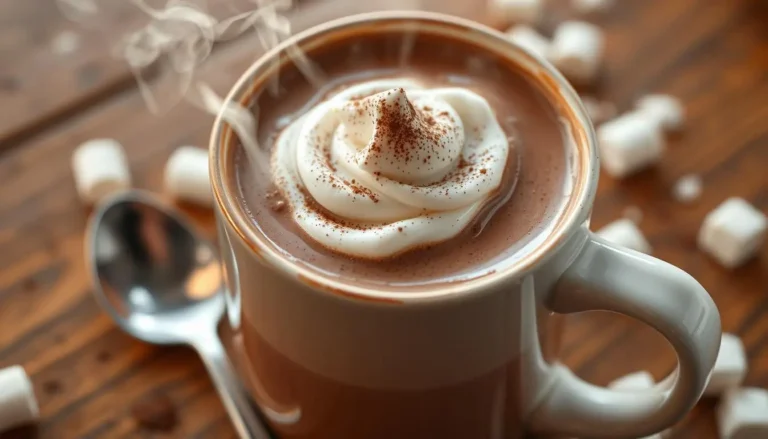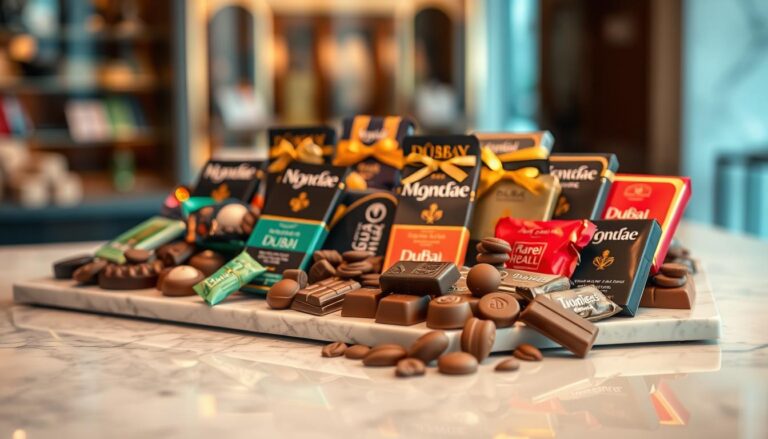Easy White Melt Chocolate Recipe
Every baker knows the magic of turning simple white chocolate into a silky, luxurious treat. The white melt chocolate recipe is a key skill that can make your desserts stand out. Whether you’re a home baker or a culinary enthusiast, learning to melt white chocolate easily will open up a world of delicious possibilities.
Imagine making smooth, glossy white chocolate drizzles that enhance your favorite desserts. The secret to success is understanding the delicate art of melting white chocolate. With the right approach, you’ll avoid common mistakes like seizing or burning, ensuring perfect results every time.
Key Takeaways
- White chocolate requires gentle heating to maintain its smooth texture
- Temperature control is crucial for successful melting
- Different melting methods work for various culinary applications
- Quality of chocolate significantly impacts the final result
- Practice and patience are essential for perfect white chocolate melting
Understanding White Chocolate Basics

A close-up photograph of a block of white chocolate on a wooden surface, partially melted and dripping down the sides. The chocolate is illuminated by soft, warm lighting, casting gentle shadows and highlights. The background is blurred, creating a serene, minimalist composition that focuses the viewer’s attention on the sensual textures and details of the melting chocolate. The image conveys a sense of tranquility and the comforting, indulgent nature of white chocolate.
White chocolate is a delicate ingredient that needs special care. It’s different from dark or milk chocolate. This makes melting white chocolate a bit tricky for home bakers.
Before you start melting, it’s important to know the basics of white chocolate. Not all white chocolate is the same. Knowing the differences can help you succeed in the kitchen.
Types of White Chocolate for Melting
There are several types of white chocolate to choose from:
- Couverture white chocolate (highest quality)
- Baking white chocolate
- Compound white chocolate
- Commercial grade white chocolate chips
Quality Indicators in White Chocolate
To find high-quality white chocolate, look for these signs:
- Cocoa butter content (should be high)
- Smooth, creamy texture
- Minimal sugar and additives
- Rich, clean vanilla flavor
Difference Between Compound and Real White Chocolate
It’s key to know the difference between compound and real white chocolate. Real white chocolate has cocoa butter, while compound uses vegetable oils. Professional bakers often choose real white chocolate for its better taste and melting.
Pro tip: Always choose high-quality white chocolate with a minimum of 20% cocoa butter for the best melted white chocolate recipe results.
Essential Tools and Equipment for Melting White Chocolate

Homemade white chocolate tools, melted and molded into the shape of a whisk, spatula, and ladle, arranged on a wooden surface. Soft, creamy texture, with a subtle sheen. Warm lighting casts gentle shadows, creating a cozy, inviting atmosphere. Minimal background, allowing the artisanal chocolate implements to be the focal point. The tools appear functional yet decorative, reflecting the versatility of melted white chocolate. Smooth, flowing forms convey the malleable, artisanal nature of the medium. A sensory exploration of the essential equipment for the "Easy White Melt Chocolate Recipe" article.
Making perfect homemade melted white chocolate needs the right kitchen tools. Both professional bakers and home cooks know that the right tools make melting chocolate easy and fun.
Choosing the right tools helps keep your white chocolate smooth and glossy. Here are the key tools you need for melting white chocolate well.
- Double Boiler or Heat-Resistant Bowl
- Silicone Spatula
- Digital Instant-Read Thermometer
- Microwave-Safe Container
- Parchment Paper
Having these tools in your kitchen ensures your white chocolate melts perfectly.
| Tool | Purpose | Recommended Material |
| Double Boiler | Gentle, even heating | Stainless Steel |
| Silicone Spatula | Smooth stirring | Heat-Resistant Silicone |
| Digital Thermometer | Temperature control | Digital Instant-Read |
Good tools make melting white chocolate much better. Precision is key when working with chocolate.
“The right equipment transforms chocolate making from challenging to enjoyable.” – Professional Pastry Chef
Each tool is important for smooth, glossy white chocolate. Good preparation leads to tasty chocolate treats.
White Melt Chocolate Recipe: Step-by-Step Guide
Making the perfect white melt chocolate recipe needs precision and care. It’s great for both baking fans and professional pastry chefs. Learning how to melt white chocolate can make your desserts even better.
- High-quality white chocolate chips or bars
- Heat-resistant bowl
- Spatula
- Thermometer
Temperature Control Tips
White chocolate is very delicate and needs gentle heat. Your melting instructions should focus on keeping the temperature right. The best range is between 100-110°F. If it gets hotter, it can burn or seize.
Preventing Common Melting Issues
Water is the enemy of white chocolate. Just one drop can make it grainy. Make sure your tools are dry before you start.
Achieving the Perfect Consistency
Getting smooth, glossy melted white chocolate takes patience. Here’s how to do it:
- Chop chocolate into uniform pieces
- Melt slowly using indirect heat
- Stir continuously
- Remove from heat when 80% melted
Pro tip: Let the chocolate finish melting with the heat left in it for the smoothest results.
Double Boiler Method for Melting White Chocolate
Learning to melt white chocolate easily means mastering the double boiler method. This technique helps control the temperature, so the chocolate doesn’t burn or seize. It’s a favorite among both professional bakers and home cooks for its ability to melt white chocolate smoothly.
To melt white chocolate using a double boiler, you need two things:
- A heat-safe glass or metal bowl
- A medium-sized saucepan
This method uses indirect heat to protect the white chocolate from direct flame. Water temperature is crucial – it should simmer, not boil, to keep the chocolate’s structure intact.
Here’s how to melt white chocolate successfully:
- Fill saucepan with 1-2 inches of water
- Place heat-safe bowl on top, ensuring it doesn’t touch water
- Chop white chocolate into small, uniform pieces
- Heat water to gentle simmer
- Add white chocolate to bowl
- Stir continuously until smooth
Professional chefs say to keep the water between 100-110°F for the best melting. Avoid sudden temperature changes to prevent the white chocolate from becoming grainy or separating.
The key to perfect white chocolate melting is patience and gentle heat.
Microwave Method for Quick White Chocolate Melting
Learning to melt white chocolate in the microwave can save you time. It’s simpler than traditional methods. But, you must be careful to avoid burning or seizing the chocolate.
Success in microwave melting comes from knowing the right techniques. White chocolate is very delicate. It can go from smooth to burnt quickly if not handled right.
Power Settings for Perfect Melting
Here are important microwave tips for melting white chocolate:
- Use 50% power setting
- Heat in 15-second intervals
- Stir between each heating cycle
- Stop microwaving when chocolate is mostly melted
Smart Stirring Strategies
Stirring is key to smooth white chocolate. Use a clean, dry silicone spatula. Gently fold the chocolate to spread heat evenly and avoid burning.
Troubleshooting Microwave Challenges
If your white chocolate looks grainy or thick, stop microwaving right away. Small lumps can be fixed by stirring and letting the heat finish melting it.
Being patient is crucial when making perfect melted white chocolate in the microwave.
Creating Smooth White Chocolate Ganache
Learning to make white chocolate ganache can take your desserts to the next level. This creamy mix adds a touch of luxury to any sweet treat. It’s perfect for both home bakers and professional chefs looking to improve their skills.
The secret to a great white chocolate ganache is using top-notch white chocolate and heavy cream. The right mix is crucial. Here’s what you need for a basic ganache:
- 2 parts white chocolate
- 1 part heavy cream
- Optional: A pinch of salt
To get a smooth texture, start by cutting the white chocolate into small pieces. This helps it melt evenly and prevents burning. Heat the cream until it’s just about to boil, but not quite. This step is key to a silky ganache.
Your ganache can be used in many ways:
- Cake filling
- Frosting base
- Glaze for pastries
- Truffle coating
Remember, let your ganache cool and thicken slowly at room temperature. Quick cooling can make it grainy or separate. Being patient ensures a smooth, professional-quality ganache every time.
White Chocolate Drizzle Techniques
Mastering the art of white chocolate drizzle can turn simple desserts into stunning works of art. A great white chocolate drizzle recipe needs precision, skill, and the right tools. These elements help create beautiful patterns that make your desserts hard to resist.
To start a beautiful white chocolate drizzle, you need to know the basics and have the right tools. Your success depends on careful preparation and paying close attention to details.
Decorative Patterns and Designs
With a white chocolate drizzle recipe, you can try many artistic techniques:
- Zigzag patterns across cakes and cookies
- Delicate linear drizzles on pastries
- Circular swirl designs on dessert surfaces
- Crosshatch patterns for elegant presentation
Tools for Perfect Drizzling
Choosing the right tools is key for a professional white chocolate drizzle. Here are some tools you might find useful:
| Tool | Best Use | Skill Level |
| Piping Bag | Precise, controlled drizzling | Intermediate |
| Squeeze Bottle | Consistent thin streams | Beginner |
| Fork | Rustic, uneven drizzles | Advanced |
Keep practicing and try different tools to find what works best for you. This will help you create stunning white chocolate drizzle designs.
Storage Tips for Melted White Chocolate
Storing homemade melted white chocolate needs careful steps to keep it smooth and tasty. The way you store it can greatly affect its quality.
For short-term storage, follow these key tips:
- Use an airtight container with a tight-fitting lid
- Store at room temperature between 65-70°F
- Keep away from direct sunlight or heat sources
- Avoid storing near strong-smelling foods
When you refrigerate your melted white chocolate, be careful to avoid moisture. Moisture can make your chocolate seize or become grainy. Wrap the container in plastic wrap and put it in the coldest part of your fridge.
Reheating white chocolate needs gentle care:
- Use a double boiler method for best results
- Heat slowly at low temperatures
- Stir continuously to maintain smooth consistency
- Avoid direct microwave heating
Homemade melted white chocolate can last up to two weeks if stored correctly. Always check for any signs of discoloration or unusual smell before reusing.
Common White Chocolate Melting Mistakes to Avoid
White chocolate melting needs precision and care. Even skilled bakers face challenges with this delicate ingredient. Knowing common mistakes helps you melt white chocolate smoothly every time.
Professional chefs say white chocolate is very sensitive when melting. Small errors can ruin your chocolate batch.
Preventing Chocolate Seizing
White chocolate melting instructions stress the importance of controlling moisture. Water is the main cause of chocolate seizing. Just one drop can make your chocolate grainy and unusable.
- Keep all utensils completely dry
- Use glass or ceramic bowls instead of metal
- Avoid wooden spoons that might retain moisture
Avoiding Burning and Overheating
Temperature control is key when melting white chocolate. Overheating can burn the chocolate, ruining its smooth texture and flavor.
- Use low, consistent heat
- Stir frequently during melting
- Remove from heat when just melted
“Patience is the secret ingredient in perfect white chocolate melting” – Professional Pastry Chef
Pro tip: Always use high-quality white chocolate with a high cocoa butter content for the best melting results.
Creative Uses for Melted White Chocolate
Melted white chocolate opens up a world of culinary creativity. Your kitchen can become a playground of delicious possibilities. This is thanks to a simple white chocolate sauce recipe or white chocolate fondue recipe.
Explore these exciting ways to use melted white chocolate:
- Dip fresh fruits like strawberries, bananas, and pineapple chunks for an elegant dessert
- Create decorative drizzles on cakes, cupcakes, and pastries
- Make homemade truffles with unique flavor combinations
- Craft gourmet chocolate bark with nuts and dried fruits
A versatile white chocolate fondue recipe can elevate your entertaining game. Set up a fondue station with various dipping items like marshmallows, pretzels, and graham crackers. The smooth, creamy texture of melted white chocolate creates an interactive and delightful dessert experience.
For a savory twist, try using white chocolate sauce as a glaze for roasted vegetables or as a unique ingredient in sophisticated sauces. The subtle sweetness can complement unexpected dishes like roasted squash or grilled chicken.
- Pro tip: Always melt white chocolate slowly and at low temperatures to maintain its smooth consistency
- Experiment with adding spices like cinnamon or lavender to your white chocolate sauce for extra complexity
Whether you’re a home cook or a culinary enthusiast, melted white chocolate offers endless opportunities for creativity and delicious innovation.
Troubleshooting White Chocolate Problems
Working with white chocolate can be tricky. But, knowing how to solve common issues will help you make perfect white chocolate truffles and other treats. Every chocolate lover faces challenges, and knowing how to fix them can save your creations.
White chocolate is delicate and needs careful handling. The right techniques can turn your white chocolate truffles recipe from disaster to delicious success.
Fixing Seized Chocolate
Seized chocolate can ruin your white chocolate truffles recipe in seconds. Here are some rescue methods:
- Add a small amount of vegetable oil or cocoa butter
- Warm the chocolate gently
- Use a whisk to smooth out texture
- Remove from heat immediately if graininess begins
Adjusting Thickness Issues
Controlling the consistency of melted white chocolate is key for perfect truffles and other treats.
| Problem | Solution |
| Too Thick | Add warm cream or milk in small increments |
| Too Thin | Cool slightly or add more melted chocolate |
| Uneven Consistency | Stir continuously while melting |
Mastering these techniques will make your white chocolate truffles recipe look like a pro’s work.
Conclusion
Exploring the art of easy white chocolate melting opens up a world of delicious possibilities. Your newfound skills will turn simple desserts into amazing creations. These creations will impress everyone you share them with.
Working with delicate white chocolate requires precision and patience. You’ve learned various techniques, from using a double boiler to the microwave. Each method has its own benefits, helping you choose the best one for your recipe and kitchen.
White chocolate is more than just melting. It’s about mastering temperature control and avoiding common mistakes. By practicing, you’ll improve your baking and dessert-making skills. Your journey is about more than following recipes; it’s about gaining confidence and intuition in the kitchen.
Remember, practice is key. Try different white chocolate brands and creative drizzling techniques. Don’t be afraid to experiment. Your creativity will grow as you master the art of white chocolate preparation.
FAQ
What’s the best way to melt white chocolate without burning it?
The safest method is the double boiler. Use low heat and stir constantly. Keep the temperature below 110°F to avoid burning. Or, use the microwave on 50% power, stirring every 15-20 seconds.
Can I use water or milk to thin out melted white chocolate?
No, water can cause seizing. Use vegetable oil, cocoa butter, or chocolate thinning agents instead. For a creamier mix, add a bit of heavy cream when making ganache.
How do I prevent white chocolate from becoming grainy or lumpy?
Choose high-quality white chocolate with lots of cocoa butter. Make sure all utensils are dry. Melt slowly over low heat, stirring constantly. Avoid overheating. If it gets grainy, try reheating and adding a bit of cocoa butter.
How long can I store melted white chocolate?
Store it in an airtight container in the fridge for up to 2 weeks. Reheat gently when needed. Always use clean, dry utensils.
What’s the difference between compound and real white chocolate?
Real white chocolate has cocoa butter, milk solids, and sugar. It must have at least 20% cocoa butter. Compound white chocolate uses vegetable oils and is cheaper. Real white chocolate melts better and tastes richer.
Can I color melted white chocolate?
Yes, use oil-based food coloring or chocolate colorings. Avoid water-based coloring. Add coloring slowly and mix well. For best results, use candy coloring or powdered food coloring.
What are some common uses for melted white chocolate?
It’s very versatile. Use it for drizzling, making ganache, creating truffles, dipping fruits or cookies, decorating cakes, making bark, and more. It’s great for both sweet treats and decorations.
How can I rescue seized white chocolate?
Add a small amount of vegetable oil or cocoa butter and gently reheat. Stir slowly to try and restore smoothness. Sometimes, you can still use it in recipes that don’t need to be smooth, like cookies or brownies.
Did You Try Our Recipe ?
There are no reviews yet. Be the first one to write one.
